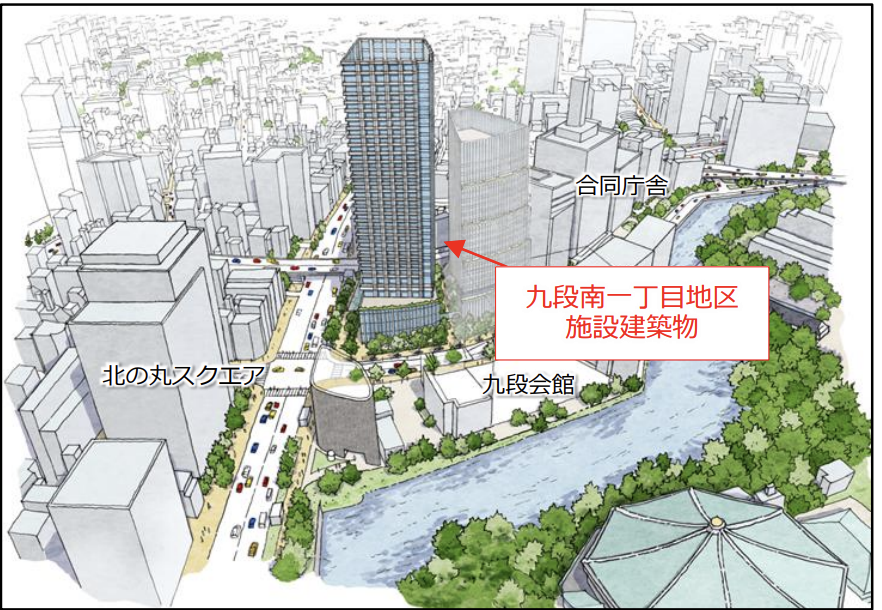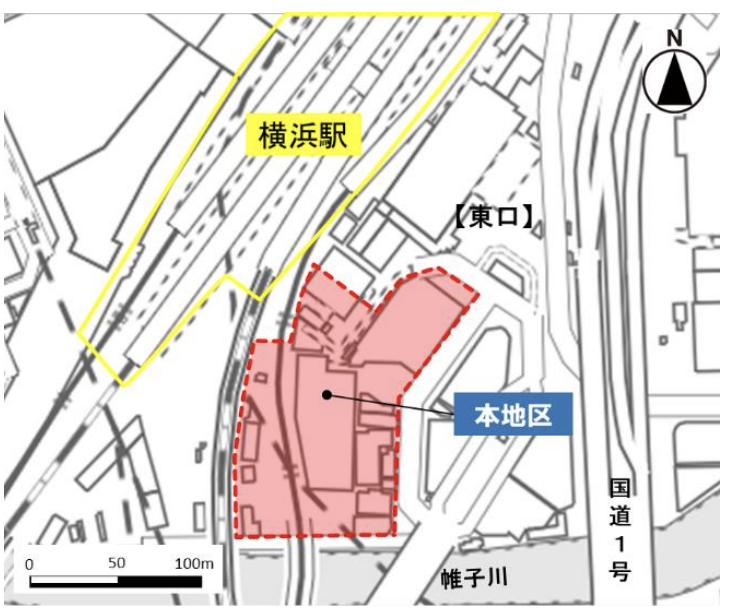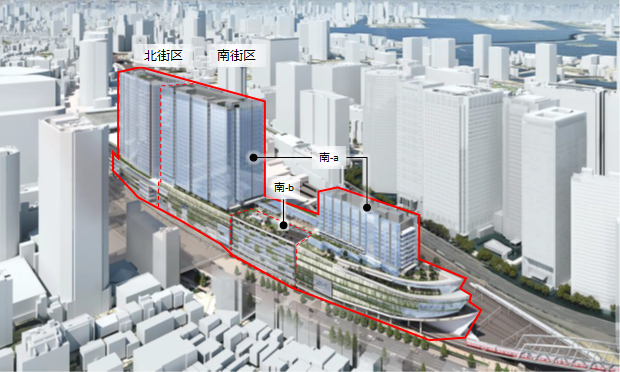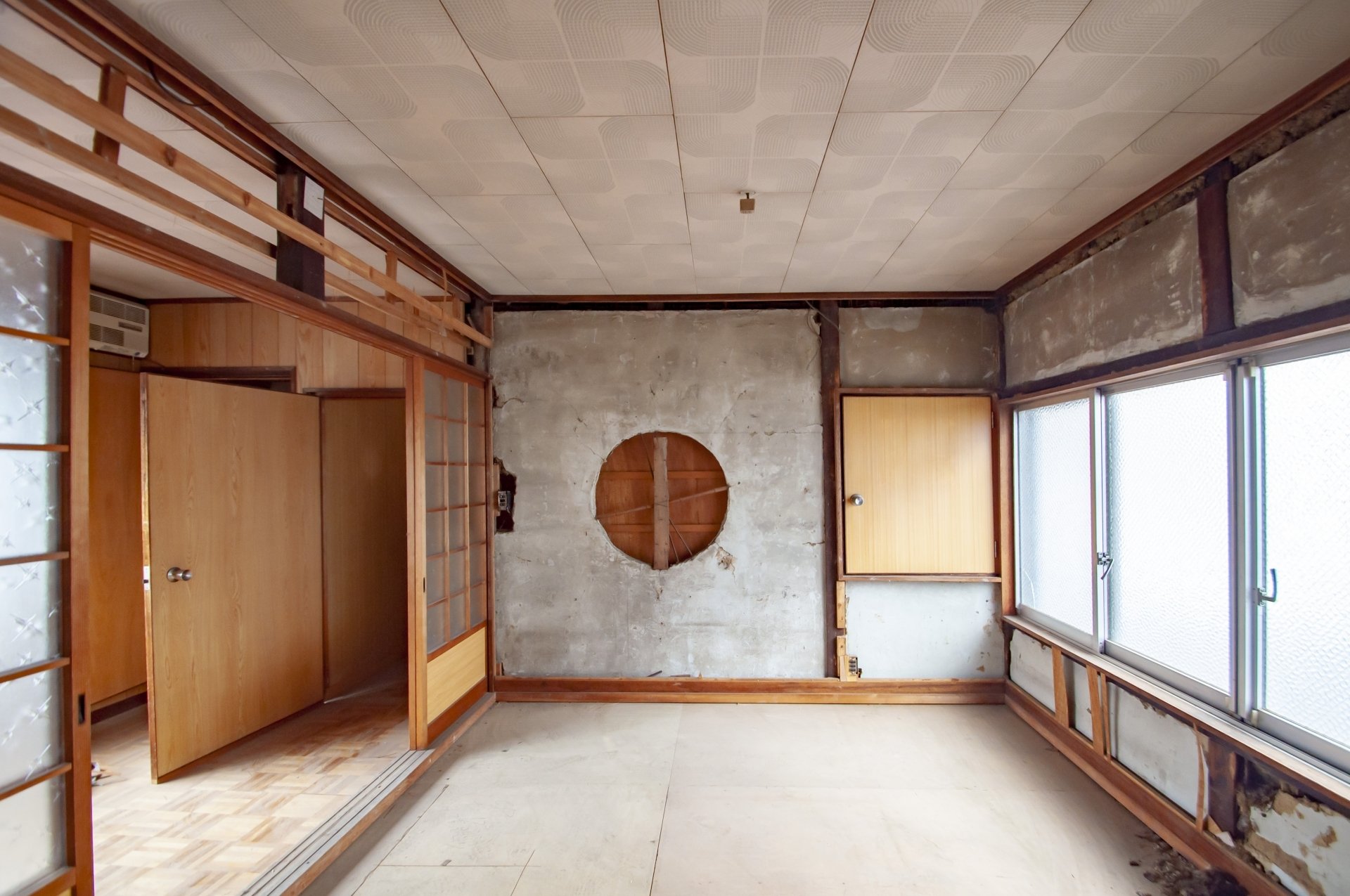When purchasing real estate or planning to construct a building, the "floor-area ratio" is an important indicator that must be confirmed. The floor-area ratio is the standard for determining how large a building can be constructed on a given piece of land, and has a significant impact on the value and use of real estate.
Simply put, the floor-area ratio is the ratio of the total floor area of a building to the site area. This value determines how large a building can be constructed on the land. For example, if the floor-area ratio is 200% for a 100 m2 lot, a building with a total floor area of up to 200 m2 can be built.
This article provides an easy-to-understand explanation of the "floor-area ratio," which is essential for real estate transactions and building plans, from its meaning, calculation methods, relationship with zoning, and impact on real estate values, from an expert's perspective. This information is useful not only for those who are considering purchasing or building real estate, but also for those who are considering real estate investment.
Basic Knowledge of Floor Area Ratio
Definition and Meaning of Floor Area Ratio
The floor-area ratio is a numerical value that indicates the ratio of the total floor area of a building to the site area. This indicator, established by the Building Standards Law, plays an important role in urban planning to ensure the rational use of land and appropriate building density.
The floor area ratio is calculated by the following formula.
Floor-area ratio (%) = Gross floor area ÷ Site area × 100
The total floor area here is the sum of the floor areas of each floor of the building. For example, a two-story house with 80 m2 on the first floor and 80 m2 on the second floor would have a total floor area of 160 m2. If the site area is 100 m2, the floor area ratio is calculated as 160 m2 / 100 m2 x 100 = 160%.
The floor-area ratio is an important indicator of how large a building can be built on the land, and should always be checked in real estate transactions and building plans.
Difference between Floor Area Ratio and Building Coverage Ratio
Building-to-land ratio" is a concept that is often confused with "floor-area ratio. It is important to clearly distinguish between the two, as they are similar but different concepts.
The Building Coverage indicates "the ratio of the building area (horizontal projected area of a building) to the site area. In other words, it is an indicator of how much area a building occupies in plan in relation to the land. On the other hand, the floor-area ratio is an indicator of the gross floor area (three-dimensional size) of a building.
For example, let us consider the case where a one-story building with a ground floor of 50m2 and a two-story building with both the first and second floors of 50m2 are built on the same lot of 100m2 in area.
- One-story building: Building-to-land ratio 50%, Floor-area ratio 50%.
- 2-story building: Building coverage ratio 50%, floor area ratio 100%.
As shown above, the building-to-land ratio may be the same, but the floor area ratio may differ. The building-to-land ratio is mainly intended to ensure sunlight, ventilation, and disaster prevention, while the floor area ratio is intended to regulate population density and the urban environment.
Purpose of the Floor Area Ratio
The main purpose of the floor-area ratio, which is set by law, is to prevent urban overcrowding and maintain a good living environment. Without restrictions on floor-area ratio, excessively large buildings would be built on limited land, which could cause various urban problems, such as problems with sunlight and ventilation, traffic congestion, and excessive load on infrastructure.
In addition, floor-area ratios are set according to the characteristics of each area. In commercial districts, high floor-area ratios are set to allow for the construction of high-rise buildings, while in residential districts, relatively low floor-area ratios are set to maintain a quiet and tranquil living environment.
Thus, the floor-area ratio is not merely a building restriction, but an important urban planning tool for both planned urban development and the maintenance of a good living environment.
| Item | Floor-area ratio | Building-to-land ratio |
|---|---|---|
| Definition | Ratio of total floor area to site area | Ratio of building area (horizontal projected area of building) to site area |
| Calculation Formula | Floor-area ratio (%) = Gross floor area ÷ Site area × 100 | Building-to-land ratio (%) = Building area ÷ Site area × 100 |
| Subject to regulation | Gross floor area of building (three-dimensional size) | Horizontal projected area of building (planar size) |
| Purpose | Adjustment of population density and urban environment | Securing sunlight, ventilation, and disaster prevention |
| Relaxation conditions | Comprehensive design system, specific city block system, etc. | Corner lots, fireproof buildings in fire zones, etc. |
Floor-area ratio calculation method
Basic Formula
Basically, the calculation of floor-area ratio is very simple. The floor-area ratio is calculated according to the formula "Floor-area ratio (%) = Total floor area ÷ Site area × 100" introduced earlier. However, the actual calculation requires consideration of various factors.
First, the area of the site is generally based on the area in the registry book, but the actual site area used in the calculation may differ, for example, if a portion of the front road is included. In particular, if the property abuts a road that falls under Article 42, Paragraph 2 of the Building Standard Law (a so-called "2-paragraph road"), the portion 2 meters from the center line of the road must be excluded from the site area for calculation.
How to calculate the total floor area
The total floor area is the sum of the floor areas of each floor of the building. However, not all areas are included in the total floor area. In accordance with Article 2, Paragraph 1, Item 3 of the Building Standard Law Enforcement Order, the following areas may not be included in the total floor area.
- Part of a balcony (within 1/2 of the floor area and less than 2m)
- Porch (if it has a roof but no walls)
- Pipe space (if certain conditions are met)
- Stairwell (portion of upper floor with no floor)
- Common corridors and stairways in apartment buildings (with relaxation under certain conditions)
In addition, basements are treated differently depending on the municipality and conditions. In general, they are not included in the calculation of floor area ratio, but some municipalities may include some of them.
Areas not included in calculations
Not all parts of a building are included in the total floor area for the calculation of floor area ratio. This is to promote the realization of a better living environment by excluding from the floor area ratio calculation certain areas that have elements that improve the quality of life.
For example, balconies are an important element that enhances the quality of living environment, but if all of them are included in the floor area ratio, the installation of balconies may be restrained. Therefore, balconies that meet certain conditions are excluded from the floor area ratio calculation.
Equipment spaces that support building functions, such as elevator shafts and machine rooms, may also be excluded from the floor area ratio calculation under certain conditions. This prevents the installation of necessary facilities from being restricted by the floor area ratio.
Thus, there are various exceptions to the floor-area ratio calculation, and an accurate understanding of these exceptions will lead to the maximum utilization of the land.
| Site Area | Total floor area | Floor Area Ratio Calculation | Result |
|---|---|---|---|
| 100 sq.m. | 200 sq.m. | 200㎡ ÷ 100㎡ × 100 | 200% (%) |
| 150 m2 | 300㎡ 300㎡ ÷ 150㎡ × 100 | 300㎡ 300㎡ ÷ 150㎡ × 100 | 200% 200㎡ / 100㎡ × 100 |
| 200m2 | 300㎡ 300㎡ ÷ 200㎡ × 100 | 300㎡ 300㎡ ÷ 200㎡ × 100 | 150% (%) |
| 300m2 | 600㎡ 600㎡ ÷ 300㎡ × 100 | 600㎡ 600㎡ ÷ 300㎡ × 100 | 200% (%) |
Relationship between zoning and floor-area ratio
Floor-area ratio restrictions by zoning district
Zoning is an area classification based on the City Planning Law, and is classified into 13 types according to use, such as residential, commercial, industrial, etc. Each type of zoning has a maximum floor-area ratio as well as the types of buildings that can be built. Each zoning district defines not only the types of buildings that can be built, but also the maximum floor-area ratio.
For example, in a Type 1 exclusive district for low-rise residential buildings, which maintains a quiet living environment, the upper limit of the floor-area ratio is limited to 50% to 200%. On the other hand, in commercial zones, where commercial activities are the main focus, the upper limit of the floor-area ratio may reach 1300%.
The maximum floor-area ratio for each zoning district is set based on the characteristics of the area and urban planning policies. Generally, the floor-area ratio is lower in residential areas and higher in commercial areas.
Floor-area ratio limits based on frontal road width
In addition to the floor-area ratio set by zoning, the width of the front road may also limit the floor-area ratio. This is to strike a balance between the size of the building and the width of the road, and to prevent problems such as traffic congestion and the need to secure evacuation routes in the event of a disaster.
The floor-area ratio limit based on the width of the front road is calculated by the following formula.
Floor-area ratio limit by front road width = front road width (m) × coefficient × 100 (%)
The coefficient here is 0.4 for residential areas and 0.6 for other areas. For example, in a commercial district bordering a 6m wide road, 6m x 0.6 x 100 = 360%. If the floor-area ratio is 400%, but the frontal road width restriction is 360%, the actual floor-area ratio will be 360%.
Thus, the actual floor-area ratio to be applied is the smaller of the floor-area ratio determined by the zoning or the frontal road width restriction. Therefore, when considering the use of land, not only the zoning but also the width of the front road is an important point to check.
| Zoning | Building coverage ratio (%) | Floor-area ratio (%) |
|---|---|---|
| Category 1 exclusive district for low-rise residential buildings | 30, 40, 50, 60 | 50, 60, 80, 100, 150, 200 |
| Category 2 exclusive district for low-rise residential buildings | 30, 40, 50, 60 | 50, 60, 80, 100, 150, 200 |
| Rural residential district | 30, 40, 50, 60 | 50, 60, 80, 100, 150, 200 |
| Category 1 exclusive district for medium and high-rise residential buildings | 30, 40, 50, 60 | 100, 150, 200, 300, 400, 500 |
| Category 2 exclusive district for medium and high-rise residential buildings | 30, 40, 50, 60 | 100, 150, 200, 300, 400, 500 |
| 1st class residential district | 50, 60, 80 | 100, 150, 200, 300, 400, 500 |
| Category 2 residential district | 50, 60, 80 | 100, 150, 200, 300, 400, 500 |
| Semi-residential district | 50, 60, 80 | 100, 150, 200, 300, 400, 500 |
| Neighborhood Commercial District | 60, 80 | 200, 300, 400, 500 |
| Commercial area | 80 | 200, 300, 400, 500, 600, 700, 800, 900, 1000, 1100, 1200, 1300 |
| Semi-industrial area | 50, 60, 80 | 100, 150, 200, 300, 400, 500 |
| Industrial area | 50, 60 | 100, 150, 200, 300, 400 |
| Industrial area | 30, 40, 50, 60 | 100, 150, 200, 300, 400 |
Floor-area ratio relaxation conditions
Comprehensive Design System
There are various mitigation systems for floor-area ratio, the most typical of which is the "Comprehensive Design System". This is a system that allows for an increase in the floor-area ratio on the condition that a site above a certain size has open space (vacant land open to the public).
Using the Comprehensive Design System, the floor-area ratio may be relaxed up to 1.5 times the normal floor-area ratio. For example, in an area where the normal floor-area ratio is 400%, the application of the Comprehensive Design System may result in a floor-area ratio relaxation of up to 600%.
This system is designed to promote building plans that contribute to the improvement of the urban environment, and requires the establishment of public open space to secure pedestrian space and contribute to the greening of the city.
Special Town Block System
The "Specific Area System" is a system that aims to create a favorable urban environment and relaxes building regulations such as floor-area ratio in specific areas. When this system is applied, it is possible to build beyond the normal floor-area ratio.
In order to be designated as a specific urban area, the plan must contribute to the improvement of the urban environment through the development of public spaces such as plazas and parks, and the construction of buildings of outstanding design. Floor-area ratios within a specific city block are set individually, allowing for a higher level of land use while maintaining harmony with the surrounding environment.
Other Mitigation Measures
In addition to the Comprehensive Design System and the Specific Area System, there are various other systems for relaxing the floor-area ratio.
High-use districts are designed to promote rational and sound high-level use of land, with maximum and minimum floor-area ratio limits. In these districts, it may be possible to build beyond the floor-area ratio of the normal zoning district.
Redevelopment Promotion District" is a system to promote urban redevelopment projects, etc. Within this district, building regulations such as floor-area ratio may be relaxed.
District plans" are plans for urban development based on the characteristics of the district, and in some cases, the floor-area ratio may be relaxed in these plans.
These mitigation programs are not intended to simply increase the size of buildings, but to improve the urban environment and promote community development according to the characteristics of the area. Therefore, in order to qualify for mitigation, a building must contribute to the urban environment by improving public space and creating good landscaping.
| Mitigation System | Outline | Examples of mitigation rates | Applicable Conditions |
|---|---|---|---|
| Comprehensive Design System | Floor-area ratio is relaxed by providing open space. | Maximum 1.5 times | Open space is secured for sites over a certain size. |
| Specified Urban Area System | System aimed at creating a favorable urban environment | Individually established | Within the area designated as a specific town block |
| High-use district | To promote rational and healthy high-level use of land | Set individually | Within the area designated as a high-level use district |
| Redevelopment promotion district | System to promote urban redevelopment projects, etc. | Set individually | Within the area designated as a redevelopment promotion district |
| District planning | Plans for community development based on the characteristics of the district | Set individually | In areas where district plans have been established |
Relationship between floor-area ratio and real estate value
Impact of floor-area ratio on real estate value
Floor-area ratio is one of the factors that have a significant impact on real estate values. In general, the higher the floor-area ratio, the larger the building can be, the more valuable the land becomes, and the higher the price tends to be.
Especially in highly convenient areas such as commercial districts and areas in front of train stations, differences in floor-area ratio are often directly reflected in land prices. For example, if land with a floor-area ratio of 400% and land with a floor-area ratio of 800% are available in the same location, the latter will have twice the floor area, and thus the land will be more valuable.
However, a higher floor-area ratio does not necessarily mean higher value. In some residential areas, the value of residential real estate may be higher in areas where the floor-area ratio is moderate and a good living environment is maintained.
Floor-area ratio in investment decisions
Floor-area ratio is one of the most important factors in real estate investment. When considering real estate for investment, it is important to check the extent to which the current building has digested the floor-area ratio.
For example, if a building with a floor-area ratio of only 200% is built on land with a floor-area ratio of 400%, there is a possibility that the floor area can be increased by rebuilding in the future. This would indicate the potential value of the property.
In addition, in areas where the floor-area ratio is expected to be relaxed or redevelopment is planned, there is a possibility that property values will increase in the future. Therefore, it is important to evaluate floor-area ratios, including trends in urban planning, in order to make long-term investment decisions.
Examples of Floor-area Ratio Utilization
The following are examples of real estate development that make maximum use of floor-area ratios.
- Mixed-use development: Development of mixed-use buildings combining commercial facilities, offices and residences. By taking advantage of the high floor-area ratio to secure floor space for a variety of uses, profitability is increased.
- High-rise con dominiums: High-rise condominium developments provide a large number of residential units on limited land in central Tokyo by taking advantage of high floor-area ratios. Efficient land use allows for lower cost per unit.
- Floor-area ratio transfer: In some areas, the unused floor-area ratio can be transferred to another site for the purpose of preserving historical buildings. This allows for higher use of the property elsewhere, while retaining the buildings that should be preserved.
As these examples show, floor-area ratio is not just a regulation, but an important element for creative real estate development. Understanding and properly utilizing floor-area ratio can maximize the value of your real estate.
How to research floor-area ratio
How to research at a government office
The most reliable way to accurately determine the floor-area ratio is to check directly with the city planning division or building guidance division of the municipality in which the land is located. At the municipal office, you can view city planning maps and zoning maps to confirm the zoning and floor-area ratio of the subject land.
When conducting a survey at the municipal office, it is advisable to bring documents that show the address and lot number of the subject land (such as a certified copy of the land registry or a public map) to facilitate the survey. It is also recommended that you also check the restrictions on the floor-area ratio based on the width of the front road and other building regulations at the same time.
Some municipalities offer not only on-site surveys but also preliminary consultations prior to applying for building permits. If there are complicated conditions or if you are considering a relaxation of the floor-area ratio, it is advisable to use this kind of advance consultation.
Research Methods via the Internet
In recent years, it has become possible to research floor-area ratios via the Internet. Many municipalities publish urban planning information on their official websites, providing a system that allows you to check zoning and floor-area ratio on a map.
In addition, the "National Land Area Information Download Service" operated by the Ministry of Land, Infrastructure, Transport and Tourism offers free access to zoning data for the entire country. However, since these online information may not be up-to-date, it is recommended that you also check with your local government office when making important decisions.
Private real estate information websites may also list floor-area ratios as part of the property information, but this information should be used only as a reference, and accurate information should be confirmed with public agencies.
Consultation with a real estate company
If you are considering purchasing or utilizing real estate, consulting with a real estate agent is another effective way to find out the floor-area ratio. In particular, a real estate company that is familiar with the area will be able to provide expert advice on not only the floor-area ratio, but also on the actual land use possibilities and restrictions.
When consulting with a real estate agent, it is advisable to consult comprehensively not only the floor-area ratio figures, but also the restrictions imposed by the width of the front road, the possibility of relaxing the floor-area ratio, and the development trends in the surrounding area. In addition, by consulting with several real estate companies, you can obtain advice from more diverse perspectives.
However, it is also recommended that information obtained from real estate companies be ultimately confirmed by public agencies. If you are considering a particularly important transaction or large-scale development, you should also consider consulting an architect, real estate appraiser, or other specialist.
Conclusion
Floor-area ratio is an important indicator of the ratio of the total floor area of a building to the site area. This article has provided a broad explanation of the floor-area ratio, from its basic meaning, calculation methods, relationship with zoning, and impact on real estate values.
The main points of floor-area ratio are summarized as follows
- Basics of floor-area ratio: The floor-area ratio is calculated as "total floor area ÷ site area × 100" and regulates the three-dimensional size of buildings. While the building-to-land ratio is a two-dimensional regulation, the floor-area ratio is a three-dimensional regulation.
- Relationship with z oning: The floor-area ratio is set at the upper limit for each zoning, with lower limits for residential zoning and higher limits for commercial zoning.
- Influence of front road width: The width of the front road may also limit the floor-area ratio, and the actual floor-area ratio will be the smaller of the upper limit based on zoning or the limit based on the front road width.
- Relaxed conditions: Some systems, such as the Comprehensive Design System and the Specific Area System, allow the floor-area ratio to be relaxed if certain conditions are met.
- Impact on real estate value: Floor-area ratio has a significant impact on real estate value, especially in commercial areas, where the high floor-area ratio is directly reflected in the land price.
- How to find out the floor-area ratio: The most reliable way to find out the floor-area ratio is to check directly with the municipal office, but it can also be found on the Internet or through a real estate agent.
When conducting a real estate transaction or building project, it is important to know the floor-area ratio accurately to maximize the potential of the land. In particular, it is recommended to consider various factors comprehensively, not just simple numbers, such as restrictions based on the width of the front road and the possibility of relaxing the floor-area ratio.
At INA&Associates, as real estate experts, we investigate building regulations, including floor-area ratio, and propose optimal land utilization based on such regulations. If you have any questions about purchasing or utilizing real estate, please feel free to contact us.
Frequently Asked Questions
Q1: Which is more important, the floor-area ratio or the building-to-land ratio?
Both Floor-area ratio and Building-to-land ratio are important, and one is not the only important factor. The Building-to-Floor Ratio limits the horizontal extent of a building, and is an index for ensuring sunlight, ventilation, and disaster prevention. On the other hand, the floor-area ratio limits the total floor area of a building and is an indicator related to the adjustment of population density and the urban environment.
Which is more restrictive depends on the use of the building and the content of the plan. For example, if a low-rise building is to be built on a large site, the Building Coverage Ratio is often the more important restriction, while if a high-rise building is to be built on a narrow site, the Floor Area Ratio is often the more important restriction.
In real estate transactions and building plans, it is important to check both indicators and make a comprehensive judgment of their impact on your plans.
Q2: Can I build beyond the floor-area ratio limit?
In principle, it is not allowed to build beyond the floor-area ratio limit. However, there are exceptional cases as follows
- Existing nonconforming buildings: Buildings that were legal at the time of construction but no longer conform to current standards due to subsequent amendments to the law may be permitted to be expanded under certain conditions.
- Relaxation of floor-area ratio: Some buildings may be eligible for a floor-area ratio relaxation under certain conditions, such as under the Comprehensive Design System or the Specific Area System.
- Special exceptions: Special exceptions to floor-area ratio may be granted for extensions for purposes of public interest, such as earthquake-resistant or energy-saving renovations.
Except for these exceptions, building in excess of the floor-area ratio limit is not permitted, and violations may result in corrective orders and penalties. If you are considering building in excess of the floor-area ratio limit, we recommend that you consult with the government or an architect before doing so.
Q3: What is an existing nonconforming property?
Existing nonconforming properties are buildings that were in compliance with the Building Standard Law and other laws and regulations at the time of construction, but that no longer conform to current standards due to subsequent revisions of laws or changes in urban planning. For example, if the maximum floor-area ratio is reduced after construction, the building may become an existing nonconforming property.
Existing non-conforming property is not illegal as long as it remains in its current condition and can continue to be used. However, if the building is to be expanded, reconstructed, or undergo major repairs, in principle, it must be brought into compliance with current standards.
However, if certain conditions are met, there are special provisions that allow additions, etc., while leaving the existing nonconforming portions intact. For example, if the addition is separated from the existing nonconforming portion, or if the degree of nonconformity as a whole does not increase after the addition is made.
If you own or are considering purchasing an existing nonconforming property, we recommend that you consult with a specialist, including the possibility of future additions or renovations.
Q4: Are basements included in the floor-area ratio calculation?
Generally, basements are not included in the floor-area ratio calculation, but the treatment varies depending on the municipality and conditions. According to Article 2, Paragraph 1, Item 3 of the Building Standard Law Enforcement Ordinance, 1/3 of the floor area of a basement used for a residence or nursing home should be included in the floor area ratio calculation.
However, many municipalities have ordinances that relax the inclusion of basements in floor-area ratio calculations, and there are cases where basements are not included completely, or not included if certain conditions are met. For example, in some areas of Tokyo, the "Basement Relaxation System" is applied, which excludes some or all basements from the calculation of floor-area ratio.
Since the treatment of basements in the floor-area ratio calculation differs greatly from region to region, we recommend that you check with the Building Guidance Section of the local government where the land is located before planning your specific project.
Q5: Which is better, low or high floor-area ratio land?
Whether a low or high floor-area ratio lot is better depends on the use and purpose of the land. It is difficult to say which is better.
Advantages of land with a high floor-area ratio: 1.
- More efficient use of land as larger buildings can be constructed.
- Advantageous when profitability is important, such as when renting or selling lots.
- Suitable for uses that require a lot of floor space, such as commercial facilities and office buildings
Advantages of land with a low floor-area ratio: 1.
- Good surrounding environment and a quiet living environment can be expected.
- Easy to secure living environment elements such as sunlight and ventilation.
- When building low-rise detached houses, the limitation of floor-area ratio is less likely to be a problem.
When selecting land, it is important to comprehensively consider not only the floor-area ratio, but also various other factors such as location, surrounding environment, transportation access, and future development plans. In addition, even with the same floor-area ratio, the actual size of the building that can be constructed will vary depending on conditions such as the width of the front road and whether the lot is a corner lot or not.
When considering the purchase of real estate or land utilization, it is recommended that you seek professional advice and select the land most suitable for your purposes.
INA&Associates provides consultation on real estate matters including floor-area ratio. With our professional knowledge and extensive experience, we can assist you in utilizing your real estate. For more information, please visit our website or contact us by phone or email.

Daisuke Inazawa
Representative Director of INA&Associates Inc. Based in Osaka, Tokyo, and Kanagawa, he is engaged in real estate sales, leasing, and management. He provides services based on his extensive experience in the real estate industry. Based on the philosophy that “human resources are a company's most important asset,” he places great importance on human resource development. He continues to take on the challenge of creating sustainable corporate value.

.png)













